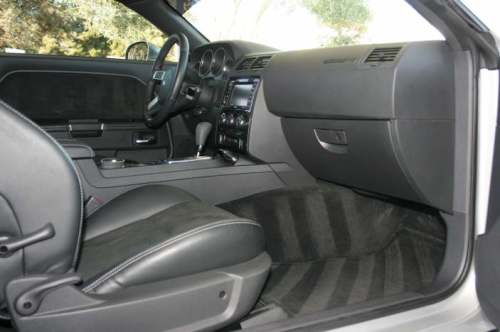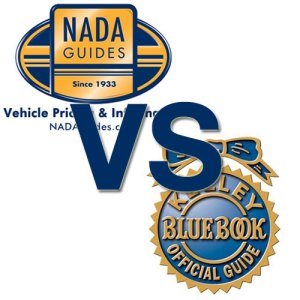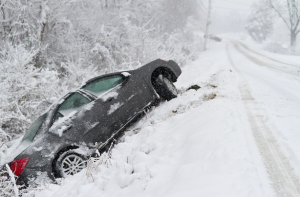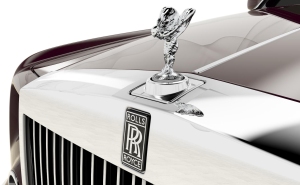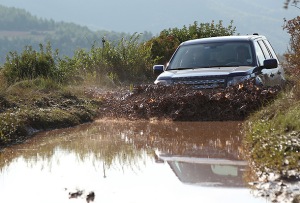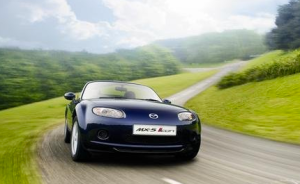 About 60% of car owners who normally take their vehicle to the repair shop report spending between $500 and $2,000+ a year on auto repair and maintenance – while 60% of DIYers report saving $500 or more (over half report saving $1,000+) from doing their own auto repairs, according to surveys by AutoMD.com1. This represents a considerable saving/spend gap. To help close this gap, below are some of the most common, and most costly, auto repair mistakes that car owners should avoid.
About 60% of car owners who normally take their vehicle to the repair shop report spending between $500 and $2,000+ a year on auto repair and maintenance – while 60% of DIYers report saving $500 or more (over half report saving $1,000+) from doing their own auto repairs, according to surveys by AutoMD.com1. This represents a considerable saving/spend gap. To help close this gap, below are some of the most common, and most costly, auto repair mistakes that car owners should avoid.
Top Ten Really Expensive Auto Repair Mistakes:
Mistake #1: Neglecting preventative maintenance and minor repairs.
Cost: $1,000s
Ignoring simple preventative maintenance, like changing the engine oil and filter, could damage your engine and replacing that engine could cost thousands2 of dollars! Failing to make minor car repairs today, such as replacing a thermostat or front brake pads, could mean more expensive repairs tomorrow. Other simple, but important, repair and maintenance tasks car owners can do on their own – or have a mechanic perform at an affordable price -include changing the transmission fluid; checking the coolant level, mixture, and condition, and checking the vehicle’s tire pressure on a regular basis.
Bottom Line: Don’t put off to tomorrow, what can be done today.
Click here for a list of repairs car owners should never ignore.
Mistake #2: Not asking for your parts back.
Cost: Unnecessary $$
If a part needs to be replaced on your car, always ask for your old part back; simply ask the mechanic to place the old part in the new part’s box. Unfortunately, some dishonest repair shops may charge you for work that was not done or repairs that are not necessary. Asking for your old parts back confirms that the new part was actually installed, and it keeps the mechanic from replacing a part that is still good.
Bottom Line: Not asking for your old parts back could mean paying for an unnecessary repair, or paying for a job that was not performed!
Mistake #3: Neglecting your tires.
Cost: More gas $$$ + tire replacement ($140 – $600+3), and loss of safety (priceless!)
Driving on underinflated tires can shorten the life of your tires, increase tire wear and lead to significant tire damage from heat, potholes and other road hazards. If the tire fails completely, you could lose control of the vehicle! Plus, keeping your tires inflated to the proper pressure can improve your gas mileage by up to 3.3 percent. And don’t be tempted to get more mileage out of your tires than they can safely give by driving on them when they are bald. Driving on bald tires can reduce vehicle traction and lead to an accident.
Bottom Line: Proper maintenance not only extends the life of your tires, it means safer driving and better gas mileage.
Click here for AutoMD.com’s Tire Care Tips.
How to check tire pressure
Mistake #4: Ignoring dashboard warning lights.
Cost: $1,000s! Loss of safety (priceless!)
Dashboard warning lights are just that, warning lights! Pay attention to them – they could be warning you about a serious maintenance problem that could lead to expensive repairs or unsafe driving. Be sure to read your owner’s manual and familiarize yourself with what the different warning lights on your car’s dashboard mean – Check Engine Light, Oil Light, Temperature Light, Brake Light – and what action you should take for each. Never ignore your Check Engine Light, thinking the car is running fine. Your MPG could be reduced by as much as 30%. A blinking Check Engine light indicates a severe misfire that could damage your car’s expensive catalytic converter. Ignoring the oil and temperature lights can result in an engine replacement meaning thousands of dollars out of your pocket.
Bottom Line: Pay attention to all your car’s symptoms, including warning lights.
Mistake #5: Telling your mechanic what parts to replace.
Cost: Double your $$ (or more!)
Today’s vehicles are extremely complex, and while it is a good idea to do your research, some vehicle symptoms can be misleading. For example, you may be convinced that your car needs new spark plugs or an engine tune-up, when you really need the MAF sensor cleaned. If you tell your mechanic to replace the spark plugs instead of asking him to diagnose the problem, he will do it and charge you for it, leaving you with the same unresolved issue.
Bottom Line: Be informed, but listen to the experts, otherwise you could end up paying for an unnecessary repair, while the original issue remains unresolved.
Click here to see a list of commonly misdiagnosed vehicle symptoms and repairs.
Mistake #6: Not doing simple repairs yourself.
Cost: Up to $200!4
Rather than spending time and money at the repair shop, try doing some of the easiest repairs yourself, such as replacing wiper blades, replacing a light bulb, even replacing a fuse and an air filter. Reference your owner’s manual and go online for videos and how to guides (AutoMD.com’s how-to guides provide step by step instructions for these repairs). And, these jobs just may provide a stepping stone and the courage you need to attempt even more of your own car repairs, which can lead to more savings.
Bottom Line: Doing simple repairs yourself could actually save you time, as well as money.
Click here for a list of repairs car owners can, and should, do themselves.
Mistake #7: Failing to properly communicate your repair issue.
Cost: Time and $$ at the repair shop: Labor rate is $40-$200+/hour!5
If you can’t describe the problem effectively, your mechanic will spend more time diagnosing (meaning more labor costs) and may come to the wrong conclusion! Write down what you hear, feel, see, and smell before you arrive and keep a log of exactly when the symptoms occur (for instance, when you’re braking or when you’re driving over a certain speed), and share this with your mechanic. Also, note the location and frequency of the symptoms, and if any repairs were done on the vehicle recently – sometimes a problem is related to the last repair. You can also go online to get help diagnosing your car’s problem – AutoMD.com has an easy-to-use diagnostic tool that provides a list of questions your mechanic might ask, as well as assistance to help you troubleshoot the problem(s) yourself.
Bottom Line: Describing your repair issue accurately will save time, money and headaches.
Mistake #8: Driving on fumes.
Cost: $225+6
Most cars on the road today have electric fuel pumps mounted inside the fuel tank. Back in the 70s and 80s, when cars had carburetors, you could drive until all the gas was gone, re-fuel, and drive again with no problem. However, most of today’s vehicles have fuel-injected engines that rely on in-tank electric pumps that use gas to cool and lubricate its components. Driving your fuel injected engine frequently on fumes could cause the pump to fail, leading to a repair costing hundreds of dollars.
Bottom Line: Keep the fuel level above a quarter tank to extend the life of your fuel pump and… avoid running out of gas!
Mistake #9: Visiting the dealership for every repair/maintenance issue.
Cost: An extra $300 per year7
Car owners can save an estimated $300+ a year on average by opting for their local independent repair shop versus the car dealership7. In some cases, the dealership service center can make more sense than the local repair shop for recalls, warranty work or very complex repair issues. However, for many jobs, if you do your research and find the right independent repair shop, a repair can be done by an expert mechanic at a savings of potentially hundreds of dollars.
Bottom Line: Compare prices on routine jobs, find out how much the dealership versus your local repair shop charges.
Click here to read dealership vs. repair shop myths.
Mistake #10: Accepting the first repair shop quote.
Cost: 14% or more $$$!8
When it comes to a major auto repair, get a second opinion… and a third and fourth one. Comparing shops and prices can also help you avoid being charged for unnecessary repairs. Before authorizing work, go online to research various repair shops, read reviews, get ratings, etc. and be sure to call to get several quotes over the phone. In a nationwide analysis8 of repair shops by AutoMD.com, mystery shoppers were able to shave an average of nearly 14% from the quoted estimate given by the majority of the shops by countering with online information: i.e., specific, ’fair’ job estimate based on labor rates and labor hours required, as well as true parts cost.
Bottom Line: Shop around, check online, save money.
Source: AutoMD
1Sources: AutoMD 2011 Mileage Repair and Maintenance Survey and AutoMD 2012 DIY Report
2AutoMD.com Auto Repair Estimate for a sample base model 2005 Toyota Camry in zip code 90746, home to the company’s headquarters. Engine Replacement on this vehicle is $4,115
3The cost of new tires is between $35 – $160 per tire, depending on size and quality: http://www.automd.com/about-automd/press/01-25-2011/
4Estimated average savings for five jobs that car owners can, and should, do themselves compared to average cost for each job at a repair shop or dealership: http://www.automd.com/about-automd/press/6-29-2010/
5Labor Rates available at www.automd.com/shops/; range shown is in zip code 90746, home to AutoMD.com’s headquarters
6AutoMD.com Auto Repair Estimate for a sample base model 2005 Toyota Camry in zip code 90746, home to the company’s headquarters
7Car Owners can Save an Estimated $300+ a Year Opting for an Independent Service Shop: http://www.automd.com/about-automd/press/5-17-2010/
8http://www.automd.com/about-automd/press/4-15-2010/
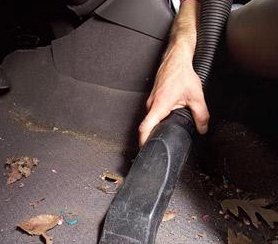 You’ll be surprised by what you find. We found a lost cell phone, enough pens and pencils to equip a small office, and enough change for several vending machine lunches. Vacuum the seats, remove the mats and vacuum the carpet. Use a brush attachment for the dash and door panels. Don’t forget to clean out and vacuum those handy door pockets (another source of buried treasure).
You’ll be surprised by what you find. We found a lost cell phone, enough pens and pencils to equip a small office, and enough change for several vending machine lunches. Vacuum the seats, remove the mats and vacuum the carpet. Use a brush attachment for the dash and door panels. Don’t forget to clean out and vacuum those handy door pockets (another source of buried treasure).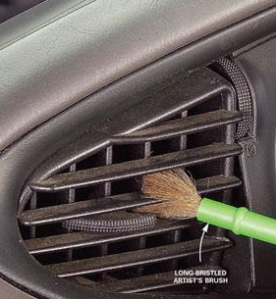 These louvers are a real magnet for dust, and a vacuum with a brush attachment just won’t get it all. Take an inexpensive paint brush and give it a light shot of Endust or Pledge furniture polish. Work the brush into the crevices to collect the dust. Wipe the brush off with a rag and move on to the next one.
These louvers are a real magnet for dust, and a vacuum with a brush attachment just won’t get it all. Take an inexpensive paint brush and give it a light shot of Endust or Pledge furniture polish. Work the brush into the crevices to collect the dust. Wipe the brush off with a rag and move on to the next one.
